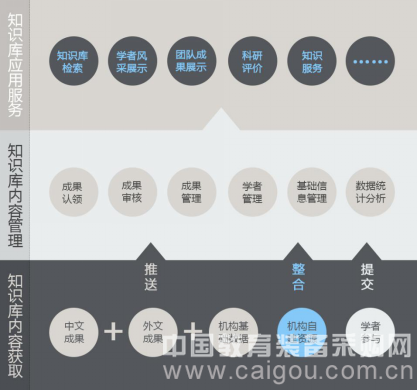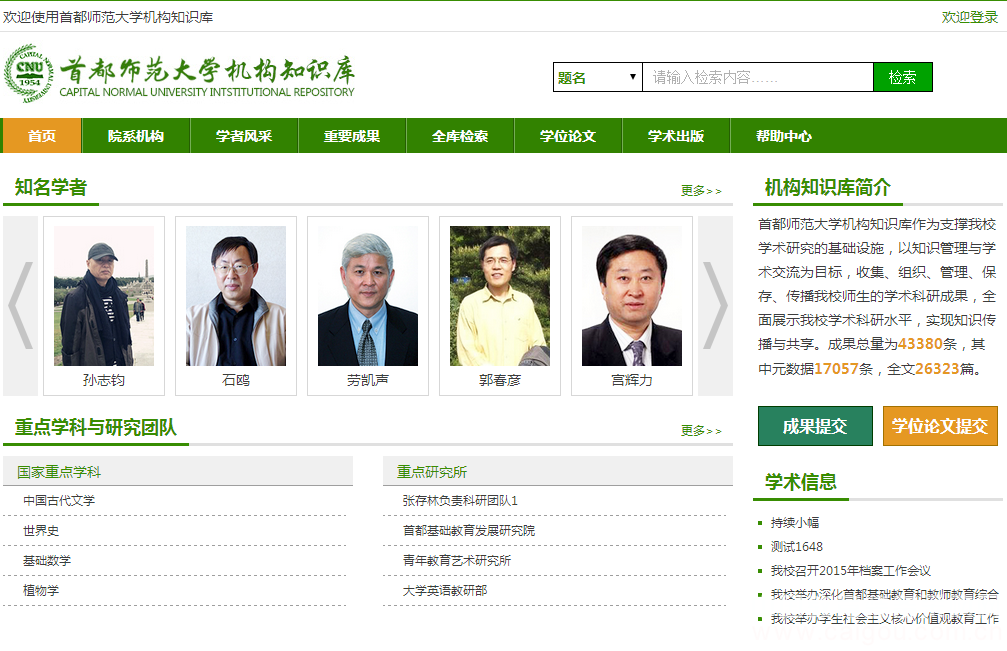As the main place for knowledge creation, organization, sharing, dissemination, innovation and application, universities are an important force for national innovation and development. Knowledge management and evaluation can reflect the development of a university, help colleges and universities to understand their own research capabilities and levels, promote knowledge sharing and dissemination, enhance academic influence, and promote knowledge production and innovation. Therefore, how to carry out effective knowledge management and evaluation is an important issue facing colleges and universities. With the increasing number of publicly published and unpublished knowledge produced by universities every year, managing these valuable intellectual assets has become a hot topic in colleges and universities.
In order to meet the in-depth application needs of the university industry in the management, dissemination, evaluation and analysis of scientific research results, China Knowledge Network has developed the "CNKI Institutional Knowledge Base Construction Platform (CIRP)" and "China Citation Database". Systematic products with features and values.
CIRP is based on the "platform + data + service" model, relying on the academic resource data collected by the CNKI authority to provide complete and efficient content construction, continuous update of data services, secure and scalable platform system management, comprehensive and rich display and Application services to achieve the goals of the organization's external publicity, display and internal sharing of institutional knowledge. For colleges and universities, CIRP has important value in the management, dissemination and evaluation of institutional knowledge assets: First, it provides support for the management and dissemination of institutional knowledge assets. It can help colleges and universities build an institutional knowledge base platform, provide rich and continuous content resources construction, realize the management and display of institutional knowledge assets, promote the organization's knowledge dissemination and influence, and promote knowledge production and innovation. Second, provide decision support for the organization to declare scientific research projects. It can statistically analyze academic research results, reveal the research direction and strength of disciplines/faculties/authors, and help organizations organize research projects. Third, provide data support for the research department, student office, and personnel department. It can organize the results of the organization, provide accurate, comprehensive and unified underlying basic results data, and support data calls, reduce repetitive work between departments, and improve work efficiency. Fourth, provide results management tools for institutional scholars. It can comb all the personal achievements of scholars, conduct multi-level statistical analysis and provide statistical reports, solve the problem of repeated submission of reports; support scholars' evaluation of results, scientific research, etc., and enhance the academic influence of scholars. At present, CIRP's typical users include Capital Normal University, Inner Mongolia University IR Alliance, Dalian University, Donghua University, Qingdao University of Science and Technology, Fujian Agriculture and Forestry University, Jinzhou Medical University, Harbin University of Commerce, Dongguan Library and other nearly 100 scientific research institutions.

Figure 1 CIRP system architecture

Figure 2 Typical case: Capital Normal University institutional knowledge base
In the fourth round of national assessment work, CNKI launched the “Chinese Citation Databaseâ€, which played an important role in providing reference for the subject evaluation related indicators, and received enthusiastic response from universities. The library is based on the collection of all source database data of CNKI. The citation data is comprehensive, accurate and authoritative. The citation types cover journals, dissertations, conference papers, books, patents, standards, yearbooks, newspapers and foreign languages. Through data analysis of the mutual reference relationship between various types of documents, the library can provide powerful reports for project or project users, project search, academic output and influence analysis, scientific research management, and subject hotspots and trend analysis. Support. At present, typical users of the library include more than 200 universities such as Renmin University of China, Shandong University, Tianjin University, Beijing Institute of Technology, Beijing University of Science and Technology, Northeastern University, Huazhong University of Science and Technology, East China University of Political Science and Law, and Southwestern University of Finance and Economics.

Figure 3 China Citation Database
Furniture Chair,Student Study Chair,Table And Chair Set,Adjustable School Table And Chair
AU-PINY FURNITURE CO., LTD , https://www.jiangmenaupiny.com